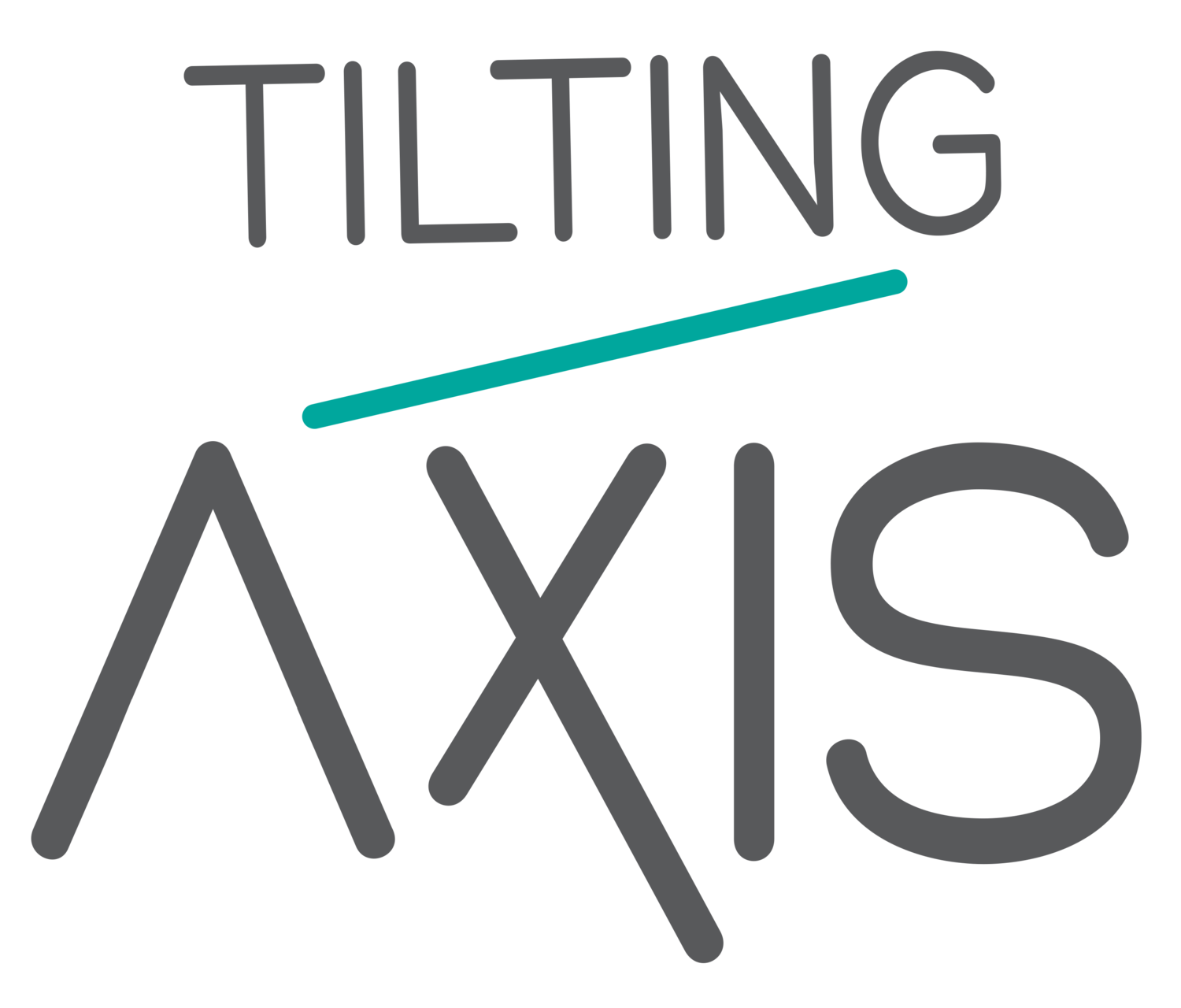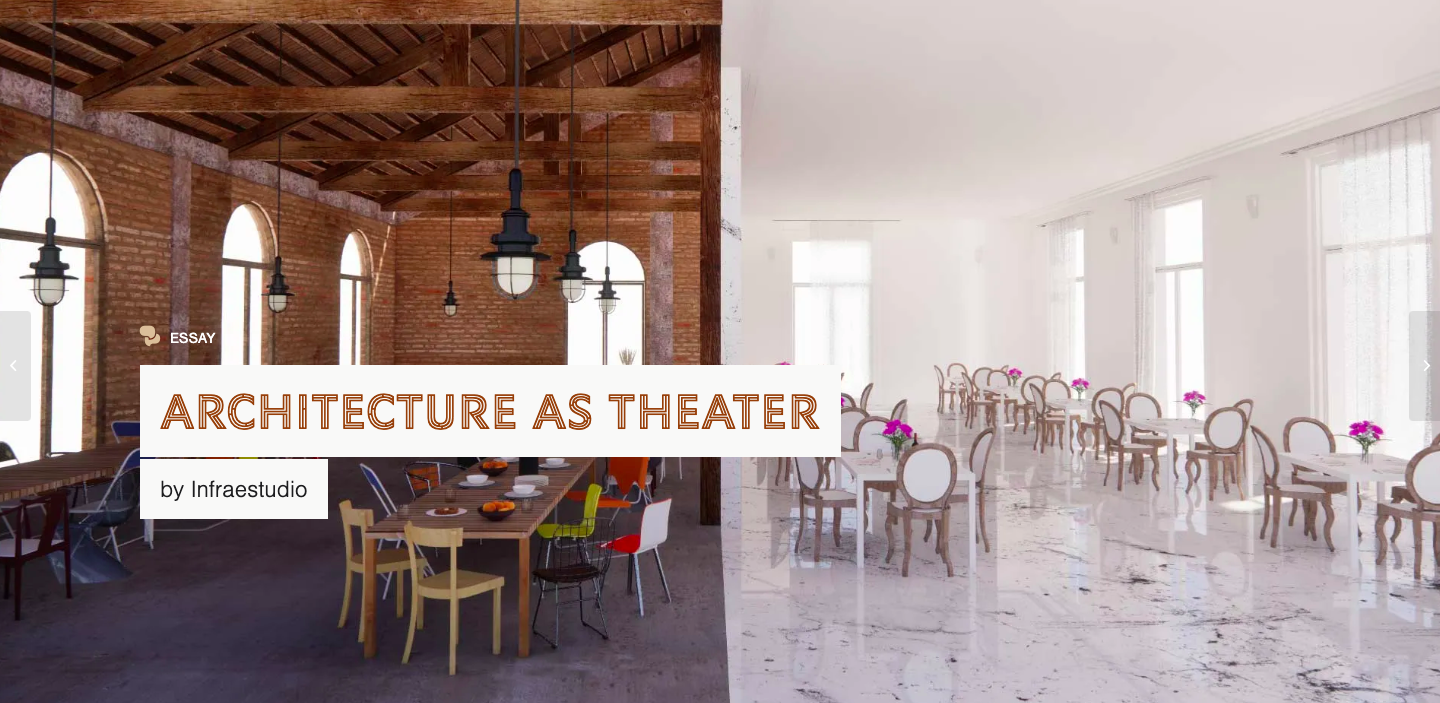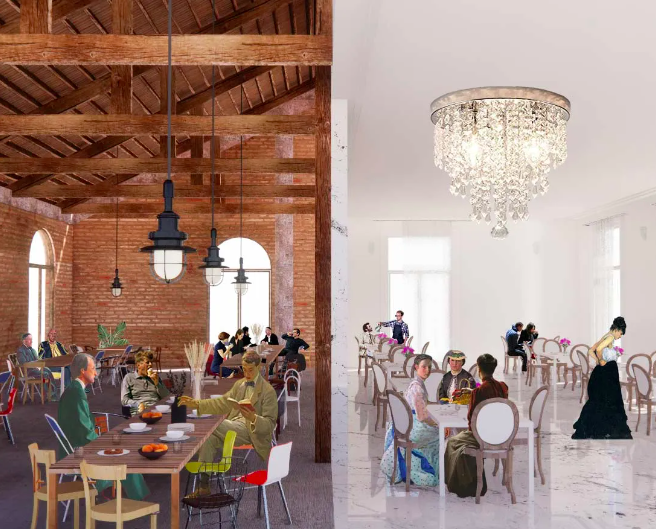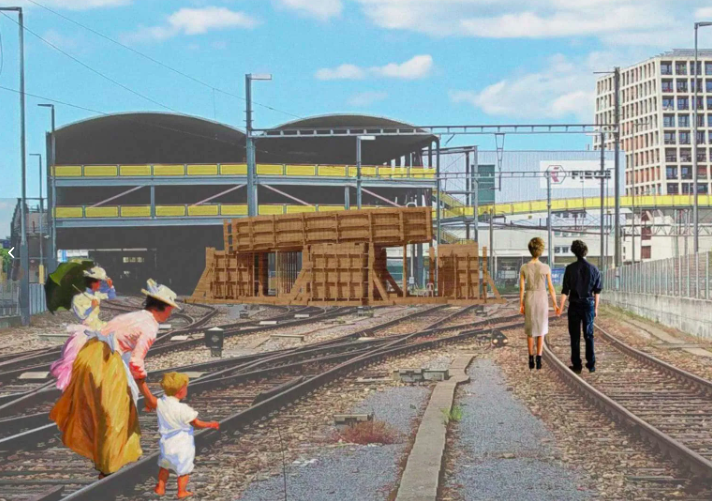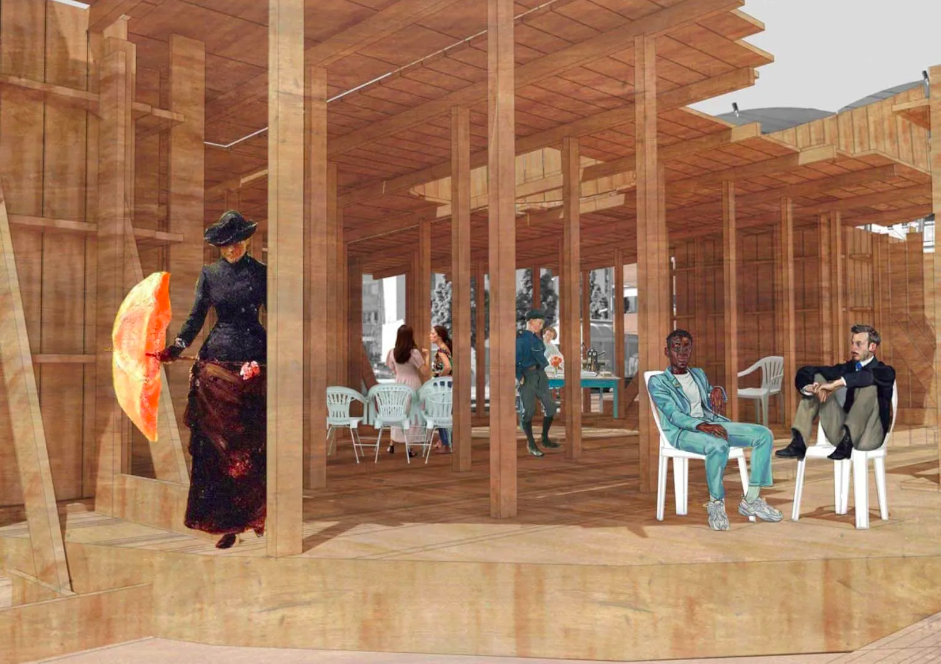In this essay, Infraestudio co-founders Anadis González and Fernando Martirena explore the relationships that architecture performs within institutional systems. The duo takes us along in how they navigate between politics and theatre in their proposals, which are constantly faced with local challenges caused by the political environment.
Infraestudio is the recipient of the Tilting Axis/Het Nieuwe Instituut Research Fellowship 2021/2022, which is organised in collaboration with Stedelijk Studies. This text outlines Infraestudio’s fellowship research, which delves into whether architecture practices can mobilise social solidarity beyond their functional space-making role. How can architects influence future political horizons beyond the long-established frameworks they operate within?
Architecture is often too late. The manifestation of under-the-table power games between politicians, and developers is frequently the only surviving portrait of an era’s power structures. Yet buildings, monuments, squares, and cities show as much as they hide, since an architectural project and its construction are only part of the performance: location, function, budget, and existence are decided within circles that then commission architects to respond with beautiful forms. It can be difficult to ignore the cynicism behind architecture.
Buildings receive political and economic interest, with architects intervening before and after design and driven by private interest. Construction can follow extractive practices, land privatization, and forced eviction leading to exclusivity, gentrification, and loss. Unable to escape from the cruelty of these commissions, architects find refuge in hedonism, discourse about material, color, and shape. The architectural project has very little agency with respect to the construction of our future, and at the same time is complicit in the conflicts that shape it.
There is a sense of social betterment in architects’ ambitions even if they are in service of power. In turning a vision into reality, good intentions fade before the pressures of the client, banks, insurance companies, deadlines, and budgets. The contradiction between vision and reality is a universal constant that we deal with through theoretical constructs and their biographies.
We come from a country in extinction where architecture proved to be a useless and incompatible profession within the so-called Communist regime in Cuba. In a hyper-centralized economic system, focused on solving problems such as how to manage social housing, public hospitals, and schools, buildings were no longer vehicles for investment, but expenses, and authorship a shameful manifestation of bourgeois ego. Under the ideological dictatorship of equality, independent architecture gradually disappeared, supplanted by prefabrication and auto-construction, until banned entirely. Meanwhile, the scarcity and instability of the materials market, and the bureaucratization of construction permits, kept growing.
Doing architecture in Cuba today has inadvertently become a gesture of political resistance. Despite the roughness of this context, design keeps emerging: slow, traumatized, orphaned, but sometimes genuine. The way in which Cuban architects have resolved their legal status in order to be able to practice independently, is to become licensed as party decorators, since this license refers to a person who designs and decorates real estate or housing spaces, state buildings or homes. It is as if Adolf Loos’s decoration nightmare has come true. In this hyper-specific context, design is no longer a tool of for power, but unrestricted by it. From these defeats, we try to rediscover architecture.
Fernando Martirena, authorization to work freelance. Providing services as decorator, organization of birthdays parties, weddings, and other activities. Courtesy of Fernando Martirena.
Architects do not build buildings; they design them and just a small number of them are built. Architects mostly work in the infinite, immaterial field of fiction. If the reality of architecture is made of physical matter in space, then its fiction is made of abstract ideas in time. Design projects are usually made for a reality, but what if architecture became independent from the real? To acknowledge this question, we started to look for answers in our daily studio practice.
A few years ago, we were commissioned to design a restaurant in a building in Havana. As the space was already given, we thought about the project as the so-called decorators we are, wondering about the meaning of object-based design. Is it all about taste? Taste comes from knowledge and personal experience and more or less consciously declares a position and intention. Through taste we can create and distinguish distinctions and associations with others or a certain surrounding.
To acknowledge contradictions in aesthetics, we chose to make a bipolar restaurant in which the space was divided into two perfectly symmetrical halves: two doors, two halls, two kitchens, and all their objects repeated. However, the objects on each side are not the same, but opposite, and together they create a right-wing and a left-wing restaurant, which, actually, are the same. To the right side of the wall the space is white and smooth, on the other side it is rough and motley. To the fine finishes and luxurious materials of the right, are opposed the cheap materials of the left, where stripping has revealed the old walls, formwork boards, and concrete blocks. On the left you drink from cut bottles, on the right, crystal glasses. Chairs, tables, and lamps by well-known designers contrast against the improvised, recovered, or self-made chairs, tables, and lamps. In this project, decoration is not used to create an aesthetic but to question it.
Infraestudio, Bipolar Restaurant (2019). Image by the authors.
In exercising duality, we must choose between one extreme and another, although we know extremes draw circles as they come together through the distance that separates them. In the banal synthesis of opposites there are no indices of good or evil, only difference and choice. We can go one day to the right, another to the left.
Although this building was never built, it finds its own reality in its fiction. Its representation is just one version of a formless idea. By creating a critical narrative, the project can turn a banal commission into a reflective weapon, and its fictional body can return back to reality from our minds. Experienced in the imagination, we call this Architecture as Theater.
Theater is the art of representation; it embodies the simultaneity and reciprocity of reality and fiction. Architecture as Theater is a performance art that embraces the limits of fiction, acts without consequence, and betrays those who commission it. It is an emancipated tool, like a living hammer that hits nails and fingers alike. It invites us to look at its plans, drawings, collages, and models to experience the hopes and fears we usually don’t want to look at. Why is this like it is? Who and to whom is it?
The 2022 Basel Pavilion competition was an invitation from the Swiss city to formulate a compelling radical thesis on the ideas of reusing and recycling. The brief consisted of constructing a space made completely of recycled materials from other constructions. The strict use of the pieces from a reuse catalogue, promoted the importance of not building monoliths but spaces made up of fragments. The pavilion design was intended to be pioneering, capable of generating changes in the construction industry and promoting greater awareness of the issues of reusing, recycling, upcycling, and circular economies.
When architecture faces the impossibility of making any real change in the construction industry, the only thing left to do is theater. Seeking spatial solutions to solve non-spatial problems, like the over-consumption or the extraction of natural resources in the construction industry, would be as if one were to correctly answer the wrong question. Neither will we prove something that in the Global South we already know: beautiful architecture can be built from recycled materials. We wanted a pavilion as an epiphany, to make us realize that we cannot continue building without consequences.
The temporality and symbolic nature of a pavilion makes it a metaphor rather than a space. Based on this idea, we wrote the script for an architectural play in which we would design what architects almost always design—a reinforced concrete building. Therefore, we would use, as we almost always do, recycled wooden elements for its formwork. But then, as we almost never do, we would stop construction right before pouring the concrete and open it to the public.
The unfinished pavilion could show us what would no longer be: the breaking point between possibility and desire. For this building-before-the-building, showing an absence should be enough. We would only see it in reverse: a hyper-realistic staging in which a constructive event is held back at the point of its maximum saturation. A mise en scène as stop before the inescapable.
How can something that is wrong be right? What would be the value of an architecture that contains more questions than it answers and creates more problems than it solves?
In the 1960s, Italy’s Superstudio and Archizoom gave up the practice of architecture for reality, to, under the name of “Radical Architecture”, make theater. Their projects react to the expansion of capitalism, consumerism, and the nightmare of modernity whose images still haunt us today. The architects used the abstraction of their seductive dystopias as a representational tool to illustrate and criticize the future they feared. Yet is in the present, feasible and current construction of the world where the greatest dangers reside. Our theater is possible, and its closeness to reality scares us.
Superstudio, The Continuous Monument: New York, 1969–70.
In 2016, Gay Talese published “The Voyeur’s Motel” in the New Yorker—the scandal around which has not yet died down. Gerald Foos, the owner of a motel in Denver, and his wife, through the false ceiling of the rooms in the motel and through the ventilation grilles, for years spied on their guests without suspicion. From this hidden space that he called the “Observation Platform”, Foos made what appears to be one of the most controversial and interesting archives in the history of sex in North America. Talese had to wait thirty years to publish the record of this wicked “investigation” in book form. Foos, breaking all moral rules, had access to the most private space that society has: bedrooms. What we do and what we say behind closed doors is designed so that it is never exposed to the public domain. The friction between public and private is determined by walls.
The Voyeur`s Motel (2016) by Gay Talese (2016). Photo: Mauricio Chávez.
In a very close and paradoxical relationship with sex, we find politics. Every day, in locked rooms, where nothing is recorded, the world’s contours are drawn. CEOs and mayors, representatives of opposing parties, developers and legislators, presidents and mafiosi, banks and judges, talk quietly and decide our future without us even suspecting it. This is an interesting paradox, of how the public realm is born in the most opaque spaces.
The Voyeur’s Parliament is an architectural intervention project inside parliaments, inspired by Foos’s infamous act and which no one asked us for. It consists of a series of false ceilings and walls, covered with a soundproof high-tech blue mesh that enables a public to observe and listen in real time to what happens inside the halls, offices, meeting rooms, and bathrooms, without the bureaucrats and officials being aware of when they are being watched. This could be a major tourist attraction in many cities—an observation space that would make us voyeurs of politics.
Infraestudio, The Voyeur´s Parliament (2021). Images by the authors.
Infraestudio, The Voyeur´s Parliament (2021). Images by the authors.
By proposing a reconfiguration of the “political space”, inverting the classic panoptic surveillance of our current political systems so that it becomes pleasurable, we would not solve anything. It would, however, make more evident how the theater of politics is staged, making politicians actors in their own play.
Infraestudio, The Voyeur´s Parliament (2021). Images by the authors.
These three projects emancipated from reality can then show hidden realities: a restaurant that makes a critical statement about the ridiculous aestheticization of political positions; a symbolic space that reminds us of the insufficiency of ecological intentions; and an intervention in parliaments that comments on false political transparencies. All are portraits of our society made by architecture.
Architecture as scenic art renounces the tactile to inhabit the space of existing and non-existing; that fiction takes shape in reality, or, reality takes the form of fiction. Architecture’s purpose is denunciation, and its strategy is to seduce imagination. The architectural project is a mirror for deliberations on control, corruption, consumerism, bureaucracy, overproduction, exclusion, colonialism, sexism, racism, and totalitarianism; it is the poetry of our failures that does not need to be built but shown.
We are not just talking about reducing architecture to a theatre of poetic gestures, but about expanding its borders in search of clarity. We do not renounce material architecture as a field of action, like Superstudio and Archizoom did. We believe that the language of form and space, although late, must display their last-minute attempts. Building today is one of those games that you know you will lose but you have to play just in case. What do we do when we cannot stop the arrival of the inescapable?
Our imposed identity of party decorator is a theatrical reality whose alienating effect is also an opportunity to rethink the profession from its borders, as public in a play. Cuba will not always be stopped in time. With the slow but persistent spread of capitalism and the private sector, it will become more of a desert to be populated. Possible futures must be thought from fiction, to experience them before they happen and illustrate that brief moment in which the future and the past could be today.
Fiction is a fight that begins before the constitution of reality, as an endogenous and intangible process from the individual to the collective. It is the only infinite terrain that can be used an agent of change. The field of the immaterial is the only fair place we have left in which to fight our struggles. In physical space, defeats leave corpses—investments, transactions, divisions, submissions—dead architecture, and junk space. In fiction, defeats are just lessons.
“Infraestudio is an art and architecture studio based in Habana, Cuba. It was founded in 2016 by Fernando Martirena, Anadis González and David Medina. Their projects and artworks focus on the political and fictional possibilities of landscapes ranging from small private buildings to large-scale spaces.”
